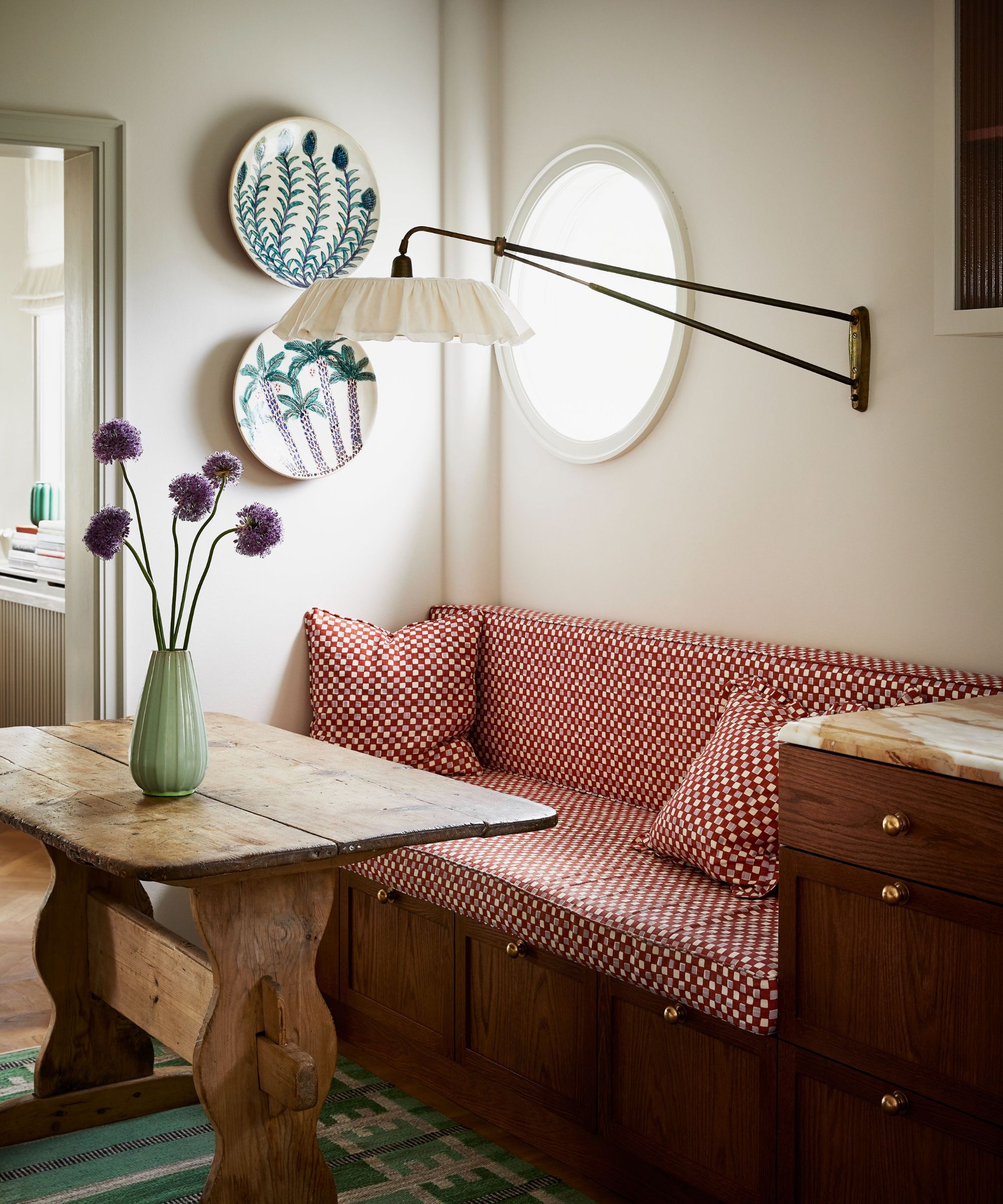Should you add lamps to your kitchen? Experts on whether or not lampscaping works in your cooking space
Designers weigh in on whether kitchen lamps add much-needed ambiance or simply impede on your countertops


Adding lighting around your home often includes table lamps for ambiance, but should you add lamps to your kitchen? Lampscaping has been a popular practice this year, but with all the functional requirements of a kitchen, it can be tricky to know whether or not a lamp is a help or a hindrance.
Usually, the go-to kitchen lighting ideas are pendant lighting and flush ceiling lights, with wall sconces considered the decorative alternative. But where do table lamps come into the equation? For some designers, they're a great way to add ambient lighting in more social parts of the kitchen, but for others, it's another thing cluttering the countertops.
So, should you add lamps to your kitchen? Here, we ask the experts that very question, to find out if lampscaping works in the kitchen, or if it's a fleeting trend that's better left to social media trends.
Should you add lamps to your kitchen?

In cozier areas of the home, like the living room or bedrooms, adding lamps is a given. However, the kitchen is the one room where lighting choices lean more functional, but as they continue to evolve into more multi-functional spaces, is it finally time to introduce lamps?
'Lamps can bring an unexpected warmth and softness to what’s often a very functional space. They’re perfect for creating cozy dining nooks or adding a decorative twist,' says Jo Plant, head of design at Pooky.
Kitchens are more than just cooking spaces these days. And, more often than not, they include a seating area, so creating a more intimate atmosphere is necessary. And lamps are an easy way to do it.
'Lamps bring a layer of intimacy, perfect for softer lighting during evening meals or when you want to unwind after cooking. Style them on kitchen islands or open shelving, where they double as both light sources and design accents,' Jo adds.
Design expertise in your inbox – from inspiring decorating ideas and beautiful celebrity homes to practical gardening advice and shopping round-ups.

When choosing your kitchen lamps, consider how they will work in your kitchen scheme. 'Choose styles with at least one design feature in common with the rest of the space – whether this is the color, shape, or material – to ensure a harmonious aesthetic in the room,' says Mara Rypacek Miller, founder at Industville.
Match the finishes to your hardware so your lamps feel cohesive, and make sure the colors you choose for lampshades feel like they belong in your kitchen – this is the perfect place to introduce an unexpected pattern.
Size and style is also key – especially if you're planning on introducing them to your counters. 'Unless you have a very large kitchen it’s likely bench space will be at a premium so opt for slim-profile table lamps that add flair without eating into this valuable workspace,' says Mara.
However, functionality is a priority in kitchens, so if you have limited countertop space, lamps probably aren't a practical option. 'While lamps are a design element I use frequently, the kitchen is one space where I never include them. Even in our largest kitchens, counter space is still a luxury and lamps are one piece that should be omitted,' says interior designer Becky Shea.
'Instead of lamps, I opt for decorative lighting in the form of pendants, sconces, and the occasional flush mount. They add an extra layer to the design while providing functional ambient lighting without compromising the available counter space,' she adds.

If you don't want to go down the lamp route but still want to be able to change the lighting for a different ambiance, consider alternatives like dimmable lights or feature lighting.
'For those not keen on lamps, consider under-cabinet lighting or dimmable overheads to achieve that layered ambiance without cluttering countertops. Accent lighting, like LED strips under shelves, can still give you that glow without the need for a traditional lamp,' suggests Jo.
If you want to make your lighting more decorative, think of unexpected ways to introduce fixtures – it could be picture lights above your kitchen art, or even opting for more statement pendant lights for a more sculptural feel.
Table lamps do have a place in kitchens where intimate seating areas have been introduced. However, it's best to avoid adding them to countertops where space is already limited. Be curated and considered about how you use lamps in the kitchen – useable areas need to be functional first, so add lamps to social areas and shelving for a decorative touch.

I’ve worked in the interiors magazine industry for the past five years and joined Homes & Gardens at the beginning of 2024 as the Kitchens & Bathrooms editor. While I love every part of interior design, kitchens and bathrooms are some of the most exciting to design, conceptualize, and write about. There are so many trends, materials, colors, and playful decor elements to explore and experiment with.





